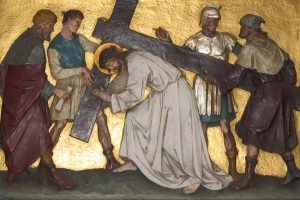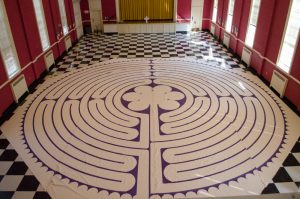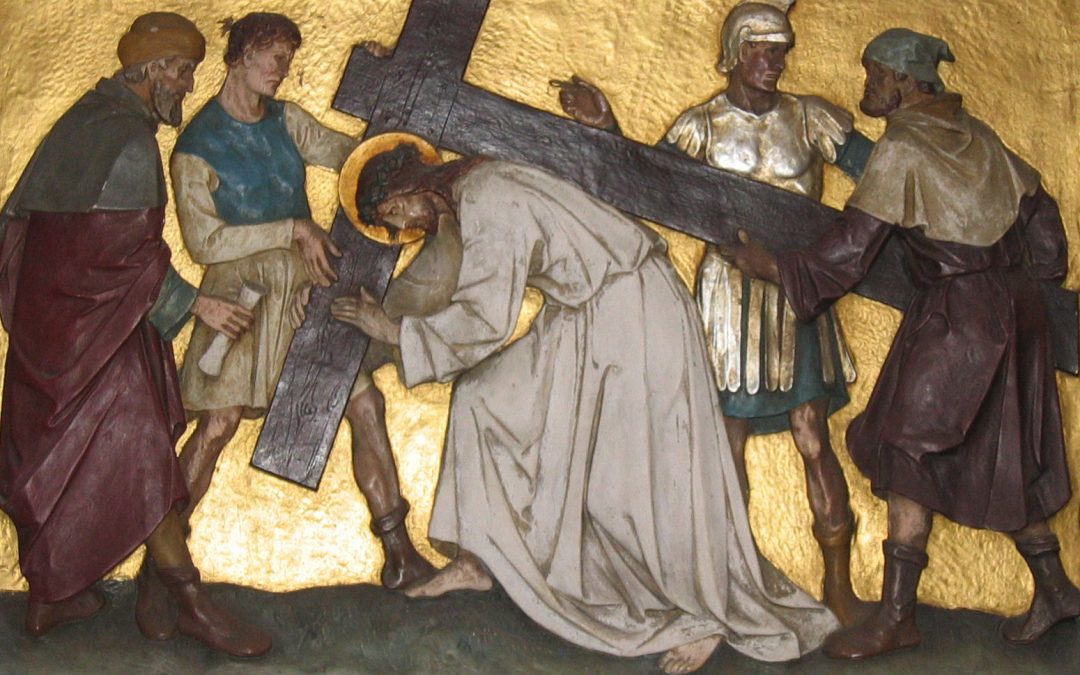Growing up, I was often in churches that seemed to skip Holy Week altogether. We celebrated Palm Sunday, then came back together for an Easter “Sonrise” service. We sometimes talked about the crucifixion and death of Christ, but it was in passing and focused on the Resurrection with little spoken about the horror and betrayal that was the reality of the death of Christ.
But as I’ve grown in my faith, I’ve begun to understand that we cannot fully appreciate the resurrection without experiencing the darkness of Good Friday. We cannot understand the betrayal and hurt Jesus felt without knowing how he cared for his disciples in the washing of feet and sharing of a meal.
This year, Holy Week begins this Sunday where we will celebrate with palms and look forward to the week ahead by learning about Christ’s Passion and death. But is only one hour of worship enough to reflect on such a momentous part of our faith? What can we do to deepen this week’s experience leading to Easter morning?
At RRCB, we have a few ways you can experience the intensity of what it means that Christ suffered and died before arriving on Easter Sunday. Will you join us?
- Prayer & Devotional Time (M-F in the Chapel, see below for details)
- Stations of the Cross (M-F in the Fellowship Hall, see below for details)
- Labyrinth Walk & Personal Meditation (M-F in the Fellowship Hall, see below for details)
- Maundy Thursday Service of Holy Communion and Tenebrae, Thursday 7:30 p.m. (see below for details)
Chapel Open for Prayer
9:00 a.m. to 5:00 p.m. Holy Monday to Good Friday (March 26-30)
Please feel free to visit our Chapel during Holy Week. Devotional material for each day of Holy Week will be in the Chapel narthex.
Please note: The Preschool is worshiping in the Chapel on Monday and Tuesday, 9:00-10:30 a.m.
Stations of the Cross
10:00 a.m. to 1:00 p.m. & 4:00 p.m. to 8:00 p.m. Holy Monday to Good Friday
10:00 a.m. to 8:00 p.m. Holy Saturday
 From the earliest days of the church, Christians have journeyed to Jerusalem to retrace the path Jesus took as he carried his cross from Pilate’s house to Golgotha. This path has become known as the Via Dolorosa or “Way of Sorrow.” Markers were put into place where Jesus started, received the cross, stopped and fell, met his mother, and was assisted by Simon of Cyrene. There was no set number of stations in Jerusalem, but eventually the number was generalized in Europe to 14 stations.
From the earliest days of the church, Christians have journeyed to Jerusalem to retrace the path Jesus took as he carried his cross from Pilate’s house to Golgotha. This path has become known as the Via Dolorosa or “Way of Sorrow.” Markers were put into place where Jesus started, received the cross, stopped and fell, met his mother, and was assisted by Simon of Cyrene. There was no set number of stations in Jerusalem, but eventually the number was generalized in Europe to 14 stations.
We will have the Stations of the Cross set up in the Fellowship Hall. The walk takes no longer than lunch break. Each station will have a written explanation and prayer. You may walk and read these to yourself or come in a group and have a person read at each station.
This journey is a walk of prayer and reflection. At every point along the way where we stop and pray, is a step in the journey of Jesus to the Cross. The stations provide space for worshipers to reflect on the passion of Christ, from the moment of his condemnation to his body being laid rest in the tomb. The movement between stations, the meditation on the scriptural narrative, and the prayers uttered as one walks the stations, create a spiritual environment that will provide a special place to experience the power and sorrow of the week leading to a joyous resurrection on Easter morning.
Labyrinth Walk & Personal Prayer / Meditation
10:00 a.m. to 1:00 p.m. & 4:00 p.m. to 8:00 p.m. Holy Monday to Good Friday
10:00 a.m. to 8:00 p.m. Holy Saturday
 On the floors of several European cathedrals are drawings, now often unnoticed, that served an important function during life in the Middle Ages. Called labyrinths, the spiraling pathways provided an opportunity for the faithful to “go on pilgrimage” of prayer.
On the floors of several European cathedrals are drawings, now often unnoticed, that served an important function during life in the Middle Ages. Called labyrinths, the spiraling pathways provided an opportunity for the faithful to “go on pilgrimage” of prayer.
Though sometimes used as a form of penance, more generally the labyrinth served as an occasion for a walking meditation as a “pilgrim” slowly moved toward the center and then returned with a renewed sense of focus about God and the responsibility of the self in God’s world.
Devotional guides for Holy Week, along written material about the labyrinth’s history and symbolism will be available. Bring a friend or come alone. We suggest that you allow approximately 45-60 minutes for the labyrinth experience.
For those who have not experienced a labyrinth walk and wish to give it a try, I am available during the week for guided meditations. Please contact me via email (libbygrammer@riverroad.church) or call the church office to set up a time to meet.
For the Labyrinth and Stations of the Cross, please enter the Fellowship Hall through the doors facing the Front Plaza off of River Road. Parking is in the South parking lot (in front of the church) across the street, located on River Road.
Maundy Thursday Service of Holy Communion and Tenebrae
Holy Thursday at 7:30 p.m. in the Sanctuary
This service commemorates two events in Holy Week: the Last Supper and the death of Christ. The service includes communion as well as a service of darkness.
At Jesus’ last meal with his disciples, he shared a final meal with his disciples and washed their feet, giving them a new commandment: to love one another. The English word Maundy for this service is derived through Middle English and Old French mandé, from the Latin mandatum (also the origin of the English word “mandate”), the first word of the phrase “Mandatum novum do vobis ut diligatis invicem sicut dilexi vos” or “I give you a new commandment, that you love one another. Just as I have loved you, you also should love one another.”
The Tenebrae, meaning “darkness” or “shadows,” dates from medieval times. In our observance, scripture, song, and silence lead us in a prolonged meditation on the events of salvation following the Last Supper through the entombment of Christ. With each progressive step of the Passion, the candles are extinguished until only the one Christ candle remains. When it, too, is removed from sight, we ponder the apparent victory of the forces of evil at the moment of Christ’s death. The Christ candle returns with its ray of promise for the third day.
Written by Libby Grammer

